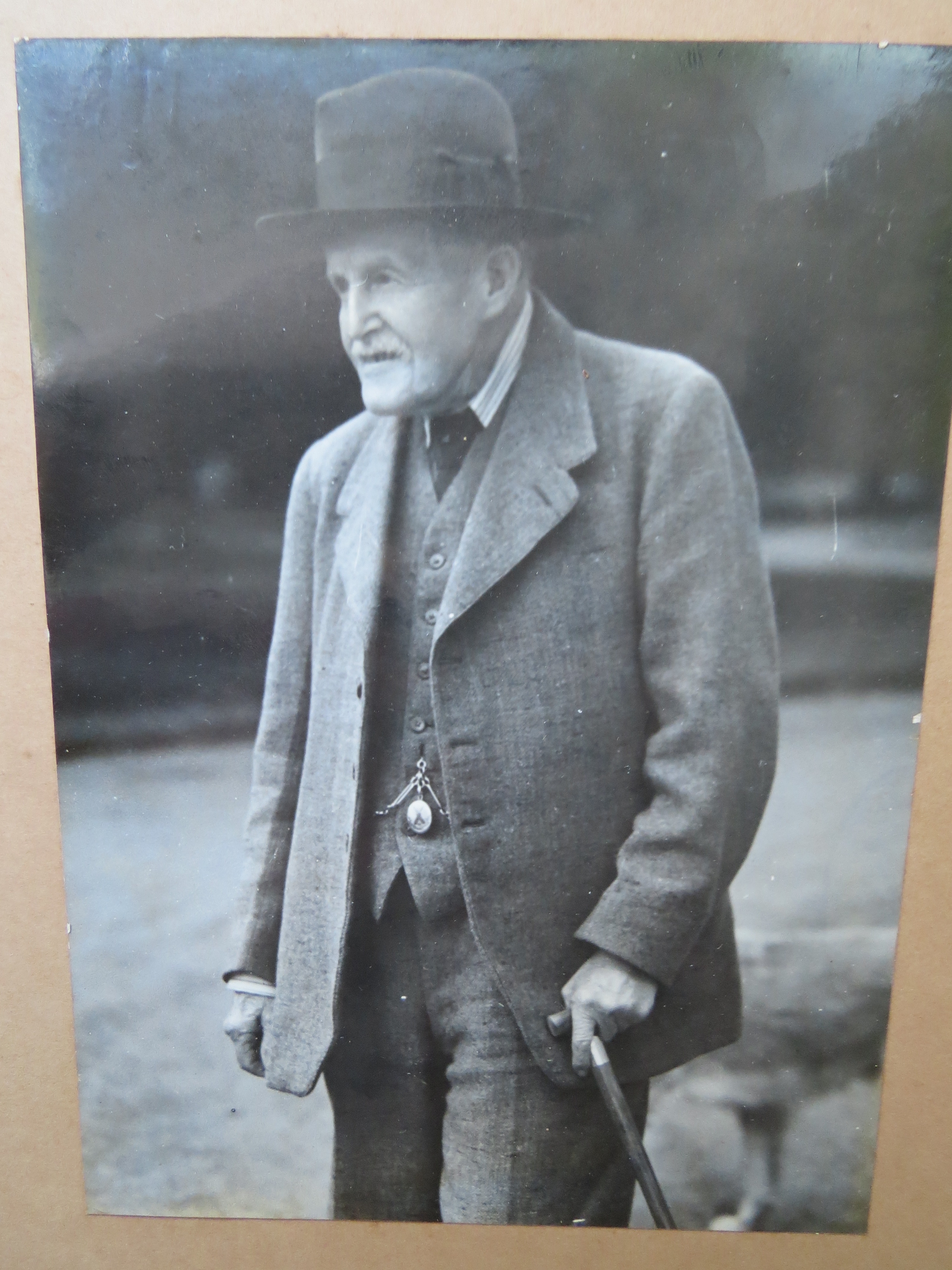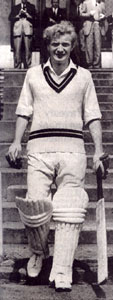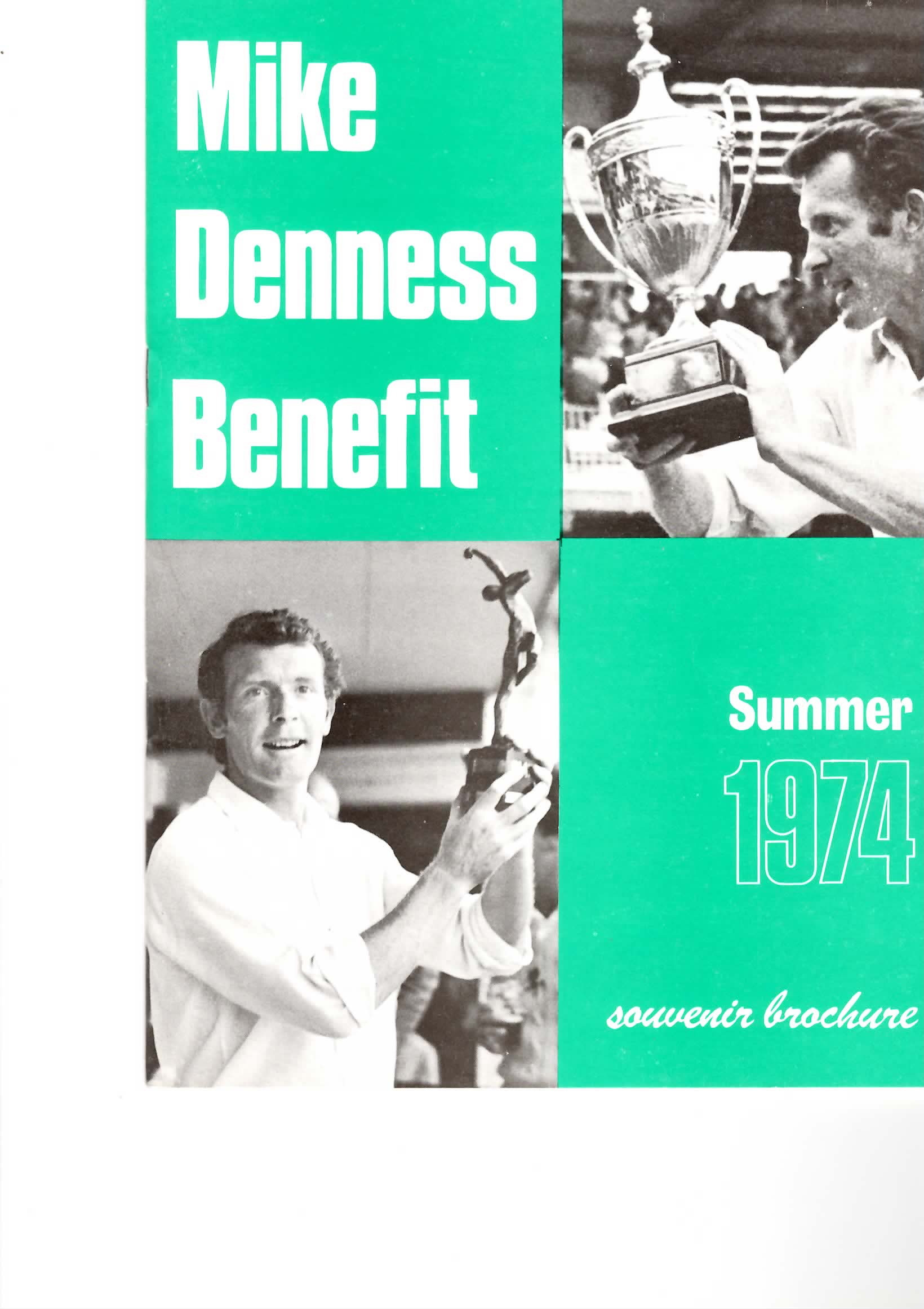The other day, a 51 year old man named Richard Scott broke a world record by sitting continuously on a playground swing for 36 hours. Before you begin to ask a) why? and b) what’s it got to do with cricket?, let me quickly add that this epic world record was set at a cricket ground, namely Loch Leven’s Larder cricket ground.
Loch Leven’s Larder is a café/farm shop in the tradition of great Scottish country eating places, and the fact that it has a cricket pitch is also in the tradition of great Scottish cricketing oddities. Scotland is a country where, however much a minority decry anything English, cricket flourishes. Where else would you come across a village – Elie in Fife – where the cricket club’s ground is the beach? Where else are there club pavilions painted in tartan colours, and where else could Kent rustle up half a dozen players in a hurry when Covid struck our first team squad last year? And not far from Loch Leven’s Larder is the village of Freuchie, who were national Village cricket champions in 1985.
I have been reading an excellent book about Scottish cricket called “The Secret Game” by Jake Perry, which shows clearly that cricket in Scotland has a long and successful history, even if it tends to attract fewer column inches than football, golf or rugby north of the border. And the connections between Scotland and Kent cricket are stronger than you might suspect.

The first time a Kent man played for England was against Australia in January 1879, when three Kent men all made their international debuts. One was, inevitably, Lord Harris, born in Port of Spain Trinidad, Charles Absolom, born in Kent but who would die in a tragic accident in Port of Spain Trinidad, and Francis Alexander MacKinnon, born in Paddington. The name gives a clue to his ethnic background, and he was, as well as being a ‘steady bat’ (to quote Lord Harris) soon to become the 35th MacKinnon of Mackinnon of the clan MacKinnon. His Kentish home was Acrise Place, in the little village of Acrise, where by coincidence Kent’s first great female cricketer, Cecilia Robinson, lived for many years until her death last year. MacKinnon was elected to the Kent County Cricket Club committee in 1875, where he remained for 34 years, and in 1889, was chosen as the club’s President. He kept up his keen interest in the county’s cricketing fortunes until he died just short of his 99th birthday, at his Scottish lair in Morayshire in February 1947.
MacKinnon, who has Kent cap number 5, played several matches alongside Henry Renny-Tailyour, Kent cap number 11. Renny-Tailyour was born in the Indian sub-continent but was definitely Scottish. He was also a remarkably versatile sportsman, playing both Rugby Union and Association football for Scotland. He was a career Army man, and played in three FA Cup Finals for Royal Engineers, gaining a winners’ medal in 1875. He died in 1920 aged 70, in Montrose.

Cap number 127 was awarded in 1955 to Jimmy Allan, an Oxford University graduate who batted right-handed but bowled “highly skilled left-arm spin with the twin virtues of deceptive flight and the ability to bowl tight for long periods” as the Kent Annual described him. He played only 40 championship matches for Kent, but scored 1329 runs at a shade over 20, and made three hundreds in the process. He also took 88 wickets at 24.04. He played 39 first-class matches for Scotland, too, achieving slightly better figures than he did for Kent, ending with a batting average of 24.25 (with a highest score of 99 not out) and 131 wickets at 20.71. Jimmy Allan’s connection with Kent was tenuous, at best, but when you discover that his captain at Oxford University was Colin Cowdrey, it all becomes clear. In 1955, he scored over 1000 runs and took 95 wickets in all first-class matches, almost achieving the double, but after that his form tailed off, and after a number of years without a county, he returned in 1966 to play three seasons for Warwickshire. Having been schooled at Edinburgh Academy, he returned to Scotland later in life and died aged 73 in Caithness General Hospital.

We cannot have a record of Scottish players for Kent without mentioning the best of the lot, Mike Denness. Michael Henry Denness OBE was born at Bellshill in Lanarkshire in 1940. He went to school at Ayr Academy, where he was outstanding at both cricket and rugby, but I remember him telling me that he started playing adult cricket for the village of Fochabers on the banks of the River Spey. By the time he came to Kent for a trial, aged 20, he had already played for Scotland, and it did not take Kent any time at all to recognise his talent. He made his debut for Kent in 1962, and in 1963, he first partnered Brian Luckhurst at the top of the order, thus creating possibly the best opening partnership in the club’s history. His captaincy of the club coincided with the wonderfully successful 1970s, in which his leadership played no small part, and he remains the only Scottish-born player to have captained England. It would be wrong to suggest that his captaincy of England was as successful as his time in charge of Kent, but in county cricket he did not have to face Lillee and Thomson. He was elected President of Kent CCC in 2012, and sadly did not live to finish his year. Among the tributes to him, Mike Gatting said that “he loved cricket and he played it straight.” As good an epitaph as you can get.
Last summer, of course, we were helped out at the very last minute by Calum MacLeod, George Munsey and Safayaan Sharif, all Scottish internationals who we were able to register along with one or two others, to play for Kent against Sussex when Covid hit the first team squad. For that we will be always grateful (and it turned out to be very exciting match).
Kent is as far from the Scottish border as any county in England (except possibly Cornwall – I haven’t checked) but the cricketing connection is strong, as these few examples show. If somebody would set up a child’s swing at Canterbury or Beckenham, maybe we could have a go at breaking the record set at Loch Leven’s Larder, to complete the circle.
0 Comments